Piers Sellers: UK-born astronaut dies aged 61
- Published
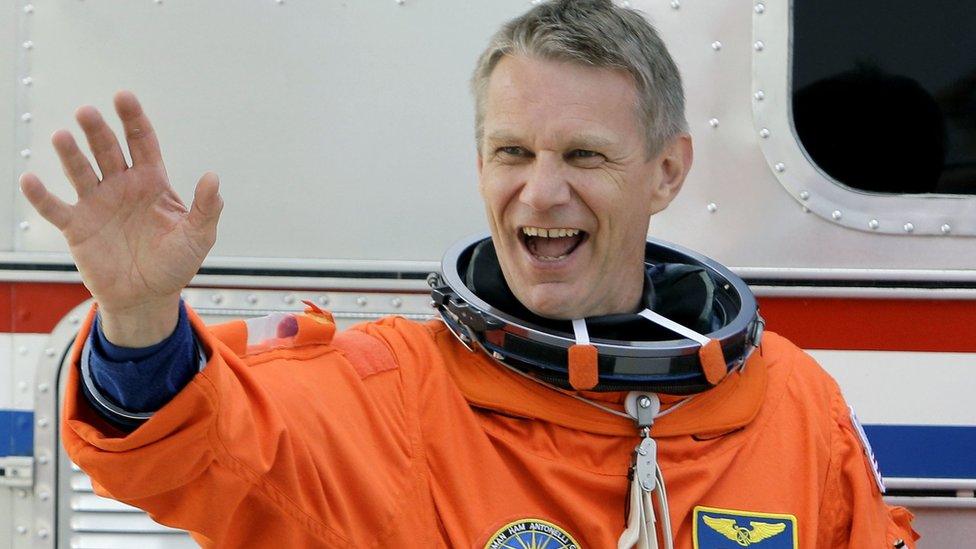
Nasa praised Piers Sellers for his "curiosity and drive to uncover new knowledge"
British-born astronaut Piers Sellers has died of pancreatic cancer, aged 61, Nasa has said.
Born in Crowborough, East Sussex, Dr Sellers began working for the US space agency as a scientist in 1982 before joining its astronaut corps in 1996.
The climate expert made three Space Shuttle flights to the International Space Station, between 2002 and 2010.
Nasa said Dr Sellers, who was diagnosed with stage four pancreatic cancer in 2015, died in Houston on Friday.
British astronaut Tim Peake - who completed a six-month mission on the International Space Station in June - tweeted that he was "saddened to hear the loss" of Dr Sellers, and added he was a "true inspiration".
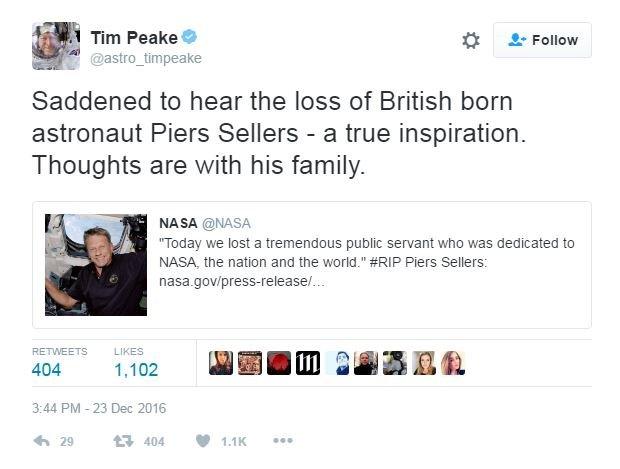
Dr Sellers became a naturalised US citizen in 1991, making him eligible for the space programme.
In January this year, he wrote a op-ed article for the New York Times, external about grappling with the meaning of the earth's fragility after learning he had terminal cancer.
He later shared an astronaut's perspective on climate change in Leonardo DiCaprio's documentary, Before the Flood.

The Piers I knew - Jonathan Amos, BBC science correspondent
When given a terminal cancer diagnosis, many people draw up a "bucket list" - a series of places or activities they want to experience before they die. Piers rejected such an idea; he simply wanted to keep on working at his job for as long as he could. After all, that job had already afforded him the opportunity to do and see things most others could only dream of.
Ever thoughtful, supremely engaging - it was always a pleasure to talk to him, whether that was about his passion for Earth science or the exhilaration he felt doing a spacewalk (his six spacewalks are the most to be completed by any Briton).
Having left Britain to become a US citizen in order to pursue his ambition of being an astronaut, you might think he had left thoughts of his country of birth far behind. But whenever we spoke by phone there was always a long preamble in which he would first want to hear news of the UK, its people and politics.
We use trite sayings on such occasions like "he had a great innings" - and he did. But with Piers there was a sense also that he was at the start of something big with his newfound voice in climate advocacy. Very definitely there was some unfinished business, and I strongly urge you to read his extraordinary op-ed article, external in the New York Times last January.

In a statement, Nasa administrator Charles Bolden paid tribute to Dr Sellers, the deputy director of the agency's sciences and exploration division in Greenbelt, Maryland.
"Piers was dedicated to all facets of exploration," he said.
"His curiosity and drive to uncover new knowledge was generously shared with audiences around the world, both from space and in wide travels to reach as many people as possible with an essential understanding of our fragile planet."
Many of the scientist's former colleagues have paid tribute to Dr Sellers online.
US astronaut Garrett Reisman - who flew with Dr Sellers on a 2010 Atlantis Space Shuttle mission - shared a picture of the pair on the International Space Station.
He wrote that the Edinburgh-educated scientist "was the best of us".
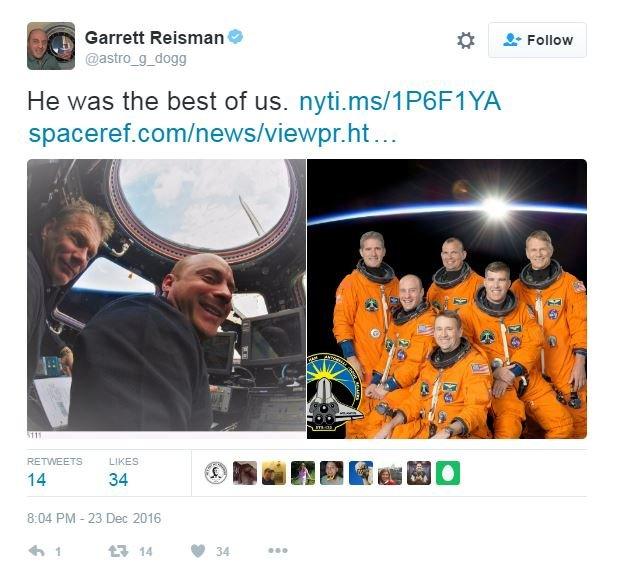
Former ISS assembly manager Beth Moses shared a picture of Dr Sellers on a spacewalk in 2002, when he helped install trusses on to the space station, and added the scientist was filled with "eternal optimism and laughter".

Six spacewalks
Dr Sellers earned a degree in ecology from the University of Edinburgh and a doctorate in biometeorology from the University of Leeds before moving to the US.
University of Leeds Vice-Chancellor Sir Alan Langlands said: "He cared deeply about our fragile planet and the people who inhabit it - his outstanding work and our fond memories of him will continue to inspire future generations."
In 2002, Dr Sellers became only the third Briton to go into space - after Helen Sharman and Michael Foale - when he completed an 11-day mission to the International Space Station.
His journey aboard the shuttle Atlantis saw him carry out three spacewalks to help continue the assembly of the ISS.
Dr Sellers's next flight was aboard Discovery in 2006, a mission designed to test improved safety measures following the 2003 Columbia disaster, in which seven astronauts died.
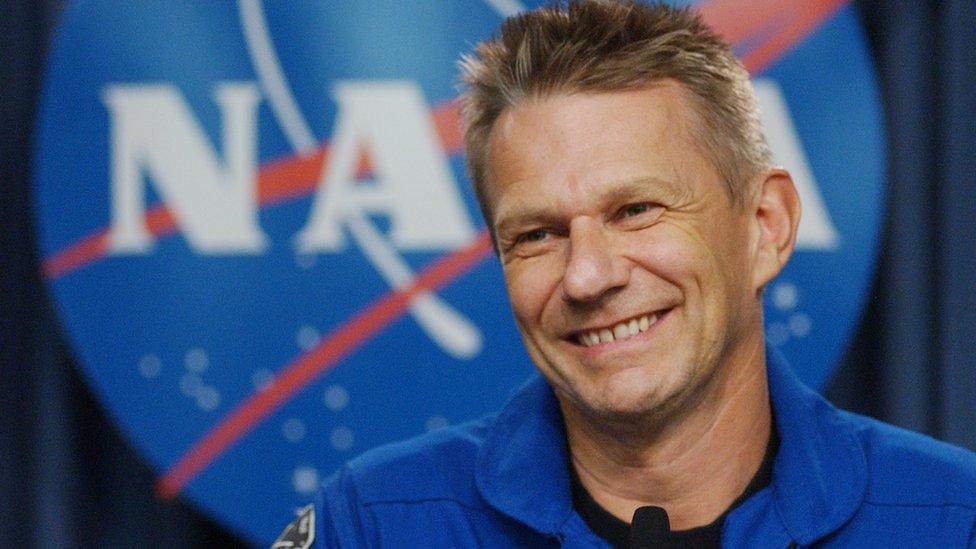
Piers Sellers talks to reporters after his return on the Discovery in 2006
In May 2010, Dr Sellers boarded Atlantis for a second time to deliver a Russian-built module to the space station.
In total, he logged hundreds of hours in space on his three shuttle flights, including six spacewalks, according to his Nasa biography, external.
In 2011, he was appointed an OBE in the Queen's New Year's Honours List.
In July this year, Dr Sellers was awarded Nasa's Distinguished Service Medal, the agency's highest honour.
- Published21 January 2016
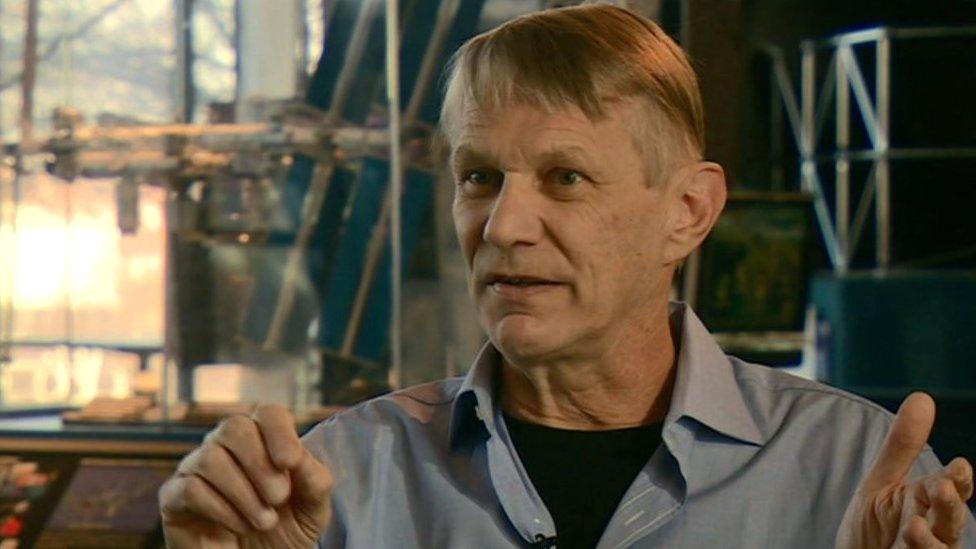
- Published31 December 2010
- Published8 December 2010
- Published15 December 2015
